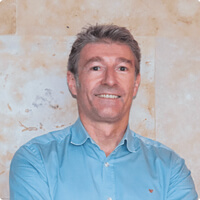
We have already stated that the 5G paradigm will reshape the world in which we live, allowing us to create networks of almost unlimited bandwidth, with extraordinary capacity and next-to-no latency.
But what will happen after that? What can we expect from 6G technology and how will our lives and communications systems be affected again?
Like with all other technologies that have emerged in the wake of a previous technology, 6G is still in its infancy and the concepts on which it is based have yet to be proved and validated. Research and investment, however, have already been committed to comply with a 10-year development cycle – meaning 6G systems may launch commercially sometime around 2030.
Given that the standards and specifications for this new technology have yet to be defined, it might seem too early to start talking about 6G. The first 3GPP document about 6G technology will be Release 21. Improvements will continue to be made to 5G and new 5G-related case studies will be introduced. Advanced 5G technology is already an important step towards the new generation. 6G technology will take telecommunications to the next level, giving users a unique experience immersed in a new virtual reality. That is, a seamless connection between the human, physical and digital worlds.

The key pillars, or concepts, for this new era have already been established. In fact, 6G technology is expected to be an Artificial Intelligence – AI and Machine Learning – ML native communication infrastructure where machines and people can fully interact with each other. In addition, it will be an open and fully connected world, so establishing security mechanisms between entities and cybersecurity technologies will be of the utmost importance to protect the integrity and privacy of the different data exchanged.
What 6G technology will bring us and how it works?
6G is so much more than just a communication technology. The world we live in today is based (at an industrial, scientific and human level) on faster transmission speeds and data flows. This creates more information, which is processed to provide systems and solutions that are more precise and exact. In this sense, 6G technology will be able to offer at least 20 times the data transfer capacity of 5G. To achieve this, 6G technology will extend the frequency spectrum by more than 100 GHz (sub-THz frequencies). This will provide more capacity and bandwidth for communications. Peak data rates are expected to exceed 100 Gbps. This broader spectrum has two important advantages:
- Reduces latency by leveraging the extreme redundancy of data transmitted over multiple channels, avoiding having to acknowledge or repeat packets.
- Using a higher spectrum allows the network to perceive radio frequency reflections and transform them into visual images of real objects during transmission. This result, along with the mass deployment of sensors with edge-computing capabilities, allows the mapping of what goes on around us to be integrated in a reality where humans and machines merge into a single entity.
However, as mentioned earlier in this article, this could not be possible without the help of artificial intelligence and machine learning, which would allow 6G wireless technology to become the wireless communication medium that connects people and things. With 6G, key technologies used today would benefit from:
- Faster communications
- Native cloud-based applications
- Low latency
- Sensors that increase information capillarity
- Client computing capabilities
Thanks to these points, it’s possible to achieve better performance with less complexity.
Case Study for the Railway Market using 6G technology
As has already happened with 5G, whose design and development were intended to meet the needs of the industry and users at the time, 6G technology has begun to be defined based on several practical cases marked by new opportunities for future growth.
Focusing on IoT applications, and specifically the Railway market (where Teldat is a market leader in software ecosystems and solutions), the future is expected to bring about more secure environments that can better serve people and assets. Railway operators will invest significant amounts in protecting their complex systems from vulnerabilities and cyber threats, which grow more pervasive by the day. In addition, they will also invest in new measures that prevent rolling stock failures.
Integrating native Artificial Intelligence – AI and machine learning technologies in sensors with edge-computing capabilities at customer facilities is a prime example of predictive maintenance. This increased connectivity (with faster data transmission and less latency) allows operators to detect and react to failures in real time, improving efficiency and reducing intervention time to prevent accidents.
When it comes to providing services, passengers are increasingly (and will continue to be) the main factor to consider. As such, they will benefit from higher speeds and greater data transfer capacity, which will improve their user experience. The immersive interaction with the environment – in which radio frequency reflections provide human-like sensory responses (a kind of digital sixth sense) – will offer high-precision 3D realities that will allow passengers to be protected on board and in the station through haptic interactions and will offer a more exact location. However, on the other side of the coin, such complex environments can create untrusted domains which increase the risk of malicious attacks on the one hand and compromise the privacy of passengers (by tracking and storing their habits) on the other. Therefore, the 6G platform must be designed with reliability in mind, guaranteeing cybersecurity and personal privacy by introducing new principles of cyber resilience in which machine learning techniques encrypt and protect passenger´s personal data.
Conclusions of 6G Networks & Technology for the railway market
6G technology is another step forward when it comes to integrating machines into our daily lives. There is still much work to be done to define what this new era will be like, but we already have a glimpse of what to expect. As a leader in the telecommunications sector, Teldat is fully engaged in developing Artificial Intelligence – AI solutions, cybersecurity applications and Machine Learning technologies. Teldat thus hopes to make a significant contribution to defining and implementing 6G algorithms.




























